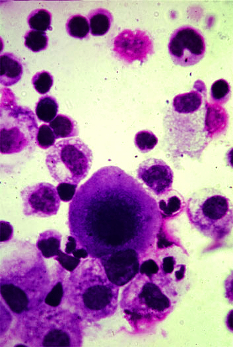Cell 'dance' discovered
 A new study reveals the ‘dance’ of nerve and vascular cells to coordinate their growth.
A new study reveals the ‘dance’ of nerve and vascular cells to coordinate their growth.
Nerve cells need a lot of energy and oxygen, and receive both through the blood.
This means nerve tissue is usually crisscrossed by a large number of blood vessels, but it had not been established just how neurons and vascular cells do not get in each other's way as they grow.
Researchers at the Universities of Heidelberg and Bonn, together with international partners, have now identified a mechanism that takes care of this.
The studies focused partly on a growth pause in the spine.
“The appearance of blood vessels in the spinal cord begins in the animals about 8.5 days after fertilisation,” explains researcher Professor Dr. Carmen Ruiz de Almodóvar.
“Between days 10.5 and 12.5, however, blood vessels do not grow in all directions. This is despite the fact that large amounts of growth-promoting molecules are present in their environment during this time.
“Instead, during this time, numerous nerve cells - the motor neurons - migrate from their place of origin in the spinal cord to their final position. There, they then form extensions called axons that lead from the spine to the various targeting muscles.”
This means that the motor neurons self-organise and grow at the time that blood vessels do not grow towards them. Only then after, do the vessels begin to sprout again.
“The whole thing resembles a carefully choreographed dance,” explains researcher José Ricardo Vieira.
“In the course of this, each partner takes care not to get in the other's way.”
To coordinate this dance, a protein is released into the cells’ environment - semaphorin 3C (Sema3C).
It diffuses to the vascular cells and docks there at a receptor called PlexinD1 - in a sense, this is the ear for which the molecular message is intended.
The researchers also found that deafened vascular cells grow uncontrollably.
“When we stop the production of Sema3C in neurons in mice, blood vessels form prematurely in the region where these neurons are located,” explains Prof Ruiz de Almodóvar.
“This prevents the axons of the neurons from developing properly - they are prevented from doing so by the vessels.”
The researchers achieved a similar effect when they experimentally stopped the formation of PlexinD1 in the vascular cells: Since these were now deaf to the Sema3C signal from the neurons, they did not stop growing but continued to sprout.
The results document the importance of coordinated operation of the two processes during embryonic development.
These findings could also contribute to a better understanding of certain diseases, such as retinal defects caused by strong and uncontrolled vessel growth.
The use of the newly discovered mechanism may also potentially help in regenerating destroyed brain areas, for example after a spinal cord injury, in the long term.
The full study is accessible here.








 Print
Print